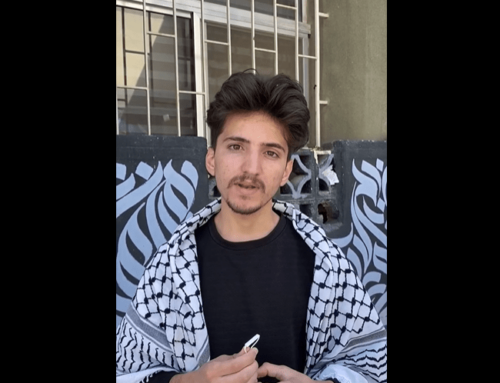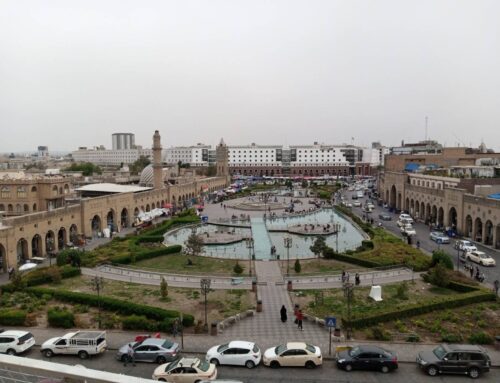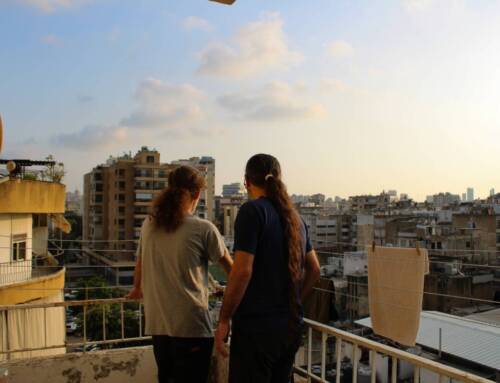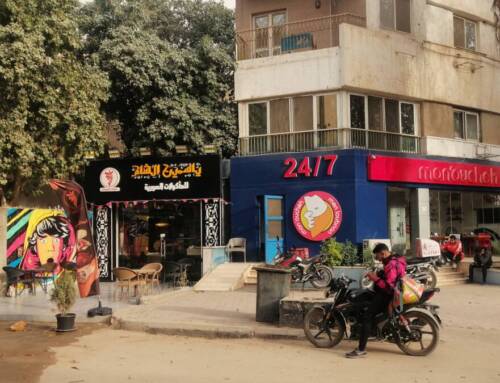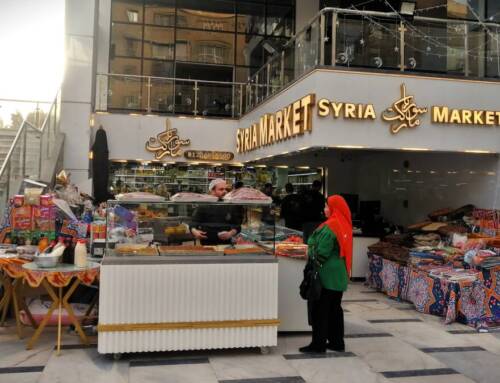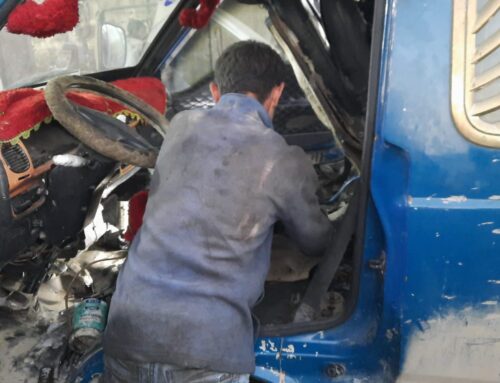Zataari: the ‘forgotten village’ that became the largest refugee camp
When one googles the word ‘Zataari’, thousands of results and images of the Zataari Syrian refugee camp show up, while the images of the Jordanian village that it was named after rarely do. The recognition of the remote village that welcomed the Syrians searching for refuge and now hosts one of the largest refugee camps in the world is all but missing.
6 August 2019
An aerial view shows houses in Zataari village, northern Jordan, 18/1/2019 (al Mamlaka TV Station)
By Hayat al-Dbais
AMMAN— When one googles the word ‘Zataari’, thousands of results and images of the Zataari Syrian refugee camp show up, while the images of the Jordanian village that it was named after rarely do. The recognition of the remote village that welcomed the Syrians searching for refuge and now hosts one of the largest refugee camps in the world is all but missing.
Before the Syrian asylum and, consequently, the establishment of Zataari refugee camp in July 2012, Zataari was merely a village in Mafraq, a province in northern Jordan.
“A forgotten village; its news was hardly known to anyone except its inhabitants and their visitors. If a car passed by the villagers, everyone would know find out about it and ask about the visitor,” Rawan Bani Khaled told Syria Direct.
When crowds of Syrians began pouring in, the government set up the Zataari refugee camp on 8,500 dunums of desert land, 10 kilometers from the Jordanian-Syrian border. This has become a turning point in the history of the village. Suddenly, the negligible small area became a point of local and international interest.
According to UN statistics released last February, the number of Syrian refugees in Zataari camp reached more than 78,000 people, while the number of residents in Zataari village, according to the former mayor of Zataari, Abdul Karim Mushref, has increased to 20,000 people.
“It was eight thousand people before the Syrian asylum,” Mushref told Syria Direct. “Some of the refugees bought land in the village and built houses on it.”
Zataari has become a model in terms of receiving and integrating Syrian refugees into the local community and the demographic growth is reflective of that.
“The people of the village accept refugees as kin, especially since the majority of them share tribal roots belonging to Bani Khaled;” a tribe with members living throughout Syria, mainly in the eastern Badiya of Homs province.
The hustle of the village
Amjad Bani Khaled, 20-years-old, could not have imagined the silence of the village he once complained about would become a passing memory. Ten years ago, he recalls, his neighborhood street was a safe play area for him and the neighborhood children; hardly anyone passed by.
Abu Mohammed, the owner of the neighborhood market, was “the source of all village news,” Bani Khaled said. “He knew the details of every family’s life.”
Today, the village is packed with cars from government institutions and international organizations in transit to the camp. “Lines of people swarm the shawarma restaurant close the neighborhood street that used to be a playground.”
Zataari, which was only known and visited by its inhabitants, became a road for the world’s politicians and celebrities heading to the camp. Among them, “artists who we never dreamed, in our wildest dreams, of seeing outside of television screens,” Rawan said.
Despite the burden Jordan carries after receiving hundreds of thousands of Syrian refugees, international attention to their plight in Zataari has led to an acceleration of the “urban development and a revival of the real estate market in the province” as a whole, “including the Zataari area, as well as the improved transportation network,” Mushref said.
Land prices in the region rose as a result of the growing population in the village. The price of an acre of land that was valued at JD4,000 is almost JD20,000 today, according to Mushref. “In spite of its disadvantages, asylum has contributed [to] 80 percent of the growth in the Zataari region.”
Zataari was not included in the World Bank grant before the Syrian asylum, and its budget was from the Jordanian government and was not enough to provide services to its people. According to the former mayor, “after becoming a beneficiary of the [international] grants as a result of Syrian asylum, investments have gone to service projects in the village.”
According to Amjad, the villagers used to get medicine and treatment in a single health center. Today, more than one health center and five pharmacies exist in the village.
Investments and jobs
There are about 50 commercial and industrial licenses registered to Syrians in Mafraq in 2019, “an indicator of the expansion and development of commercial activities in the province,” president of Mafraq Chamber of Commerce, Khairu al-Arqan, told Syria Direct. But the magnitude of the contribution of Syrian refugees in Jordan, including Mafraq, is much greater since Syrian refugees who head businesses often register with the Jordanian government departments in the name of their Jordanian relatives or acquaintances to bypass the conditions of Jordan Investment Commission (JIC).
To obtain or renew an investor B card, Syrian share in the registered capital of a company must be no less than JD50,000, according to JIC, and that the project provides at least 10 permanent jobs, with value-added for Jordanians, proven through Social Security.
As for the impact of Syrian asylum on the labor market in Jordan, Fatima Al-Badareen, head of Employment and Vocational Guidance Department in Mafraq Labor Directorate, believes that “a wide segment of Syrian workers did not affect the youth of Mafraq, because the professions Syrians work in are not within the interests of the youth of the province.”
She explained in an interview with Syria Direct that “the Syrian came to Jordan skilled in trades and professions that distinguished him in the labor market.”
In the same context, international and local organizations dealing with Syrian refugees have created job opportunities for both Jordanians and Syrians. This was the case with Amjad, who is currently working with a humanitarian organization in Zataari camp.
Mushref asserted, however, that although the international institutions and organizations created job opportunities for Jordanian youth, there is a “problem in the lack of sustainability of these opportunities and short duration,” and stressed the need to address this problem and make jobs more sustainable.
With all the benefits and challenges Syrian asylum in Jordan brings to the village community in Zataari, Rawan believes the departure of the refugees will turn the village back into what it was. She likened the scenario to a scene where “your house is full of guests, with lots of buzz and movement. Then they leave and turn the lights off. It’s quiet. The house is isolated once again, returning to what it was before.”
This report is part of Syria Direct’s Connecting Communities through Professional Engagement Project in partnership with the Australian Embassy to Jordan’s Direct Aid Program.
This report was originally published in Arabic and translated into English by Nada Atieh


